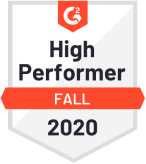According to Gartner, 96% of customers with a high-effort service interaction become more disloyal compared to just 9% who have a low-effort experience. A high effort service interaction can mislead your customers and make them lose interest in your brand. They either leave your website or share the negative word of mouth about you.
Besides, delighting your customers you also need to focus on lowering effort experience of your customers. How? Start gauging the effort level of your customers through Customer Effort Score (CES) metric.
What is a Customer Effort Score?
Customer Effort Score (CES) is the concept or metric introduced by CEB (now Gartner) to surveying customers and determine their efforts experience. CES Survey can be conducted simply by putting a CES Question that The CES question "To what extent do you agree with the following statement: The company made it easy for me to handle my issue." Here, customers are provided with the scale ranges from 1-7 to rate their effort experience.
According to CEB, 75,000+ customers who have had an interaction with customer service through various channels (phone, email, chat, and so forth), and hundreds of structured interviews with customer service leaders all around the world.
How to Calculate Customer Effort Score?
You can calculate the overall CES by finding the average of all your customers’ scores:
Customer Effort Score = Addition of all customer effort scores ÷ Total number of respondents.
For example, say, if you get 12 responses: 3, 7, 5, 3, 7, 7, 6, 5, 7,7, 7, 7
So, your customer effort score = Addition of all customer effort scores ÷ Total number of respondents.
CES = (3+7+5+3+7+7+6+5+7+7+7+7) ÷ (12)
(71) ÷ (12)
Therefore, your Customer Effort Score = 5.9
Why You Need Customer Effort Score?
The Customer Effort Score Surveys serve the businesses with the metric that not only triggers specific interaction between them and their customers but also gauge the level of effort they put to achieve their goals. CES helps the business to deliver higher-quality interactions and improve fidelity towards the brand.
Using the CES Surveys, you can easily gauge the effort level of your customers.
1. More Predictive of Customer Loyalty
If we talk about Customer Feedback Metrics or Customer Experience Metrics, we have broadly 3 metrics available in the market, Customer Satisfaction Score (CSAT), Net Promoter Score (NPS), and Customer Effort Score (CES).
Initially, Customer Satisfaction Score (CSAT) was the first metric to measure customer experience and considered as the most predictive power metric for customer loyalty. But in 2003, Fred Reichheld introduced the Net Promoter Score (NPS) at Bain & Company to measure customer loyalty. In 2008, the Corporate Executive Board (CEB), now Gartner has brought the Customer Effort Score (CES) metric for measuring customers' effort experience. According to them customer effort also affect customer loyalty. Now the question was that if all three metrics work for driving customer loyalty and better experience, than which one is the most persuasive option?
About this, various research was conducted by CEB. In one research they've found that high-effort service experience makes your customer disloyal towards your brand and increases the churn rate.
According to the CEB analysis, Customer Effort Score (CES) predicts customer loyalty 1.8x better than customer satisfaction scores.
In 2010, Gartner has determined a correlation between the amount of effort required by a customer to resolve a problem and customer loyalty. Less the effort more likely customer was to become loyal. Customer Effort Score has gained immense popularity in 2010 when the Harvard Business Review published an article titled 'Stop Trying to Delight Your Customers' in which they emphasized that reducing efforts is much more important than delighting your customers.
2. Returns on Investment in CES
Here are some noticeable statistics that can help you to realize very well that why you need Customer Effort Score for your business:
- More Effective than NPS and CSAT - The CEB found that CES is 1.8x more predictive of customer loyalty than CSAT and 2x more predictive than NPS.
- Ensure Effortless Experience - 88% of the customer going through an effortless experience are likely to spend more.
- Improves Repurchase Rate - 94% of customers who experienced low-effort service interaction are intended to repurchase.
- Reduce Cost - CES has phenomenally declined 40% of repeat calls, 50% of escalations and 54% of channel switching. This has lower the effort experiences and reduced costs by 37%.
 Integrations
Integrations

.png)





-min-1.png)
.jpg)
.jpg)
-1.png)
.jpg)

















